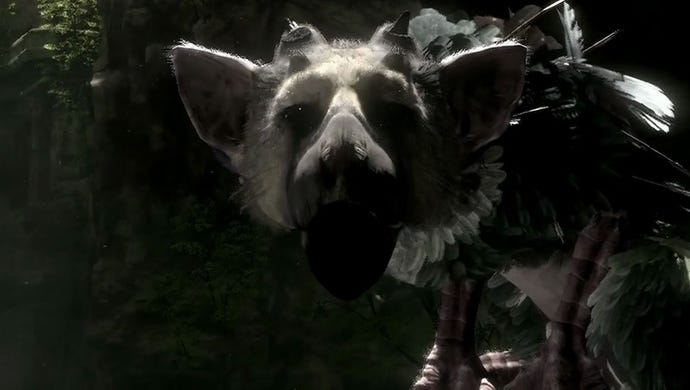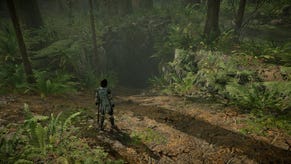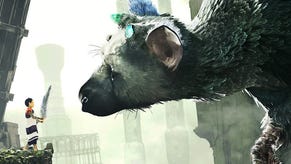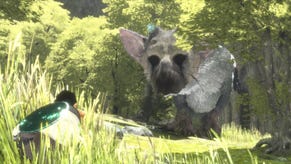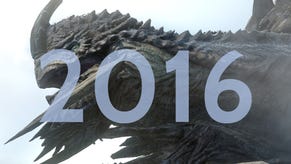When The Last Guardian gets flaky, you get a chance to appreciate how good it really is
The Last Guardian is a very special game, and its flaws only make it easier to see that.
The Last Guardian is an imperfect but astounding feat of design and technical wizardry, which has no right to work as well as it does.
I feel like a lot of players are going to miss this. Beneath the simple trappings of a game which has clear ancestral ties to 2001 release Ico is something breathtakingly ambitious and complex: one of the best AI companions in all of gaming's history, and a marvel of level design on two conflicting scales.
The Last Guardian was in development for a very long time, but that’s because what Ueda was trying to do was hugely ambitious. I doubt that all the time and money in the world could have made The Last Guardian "perfect".
Let's start with the AI companion. Although you can issue simple commands once you've won their heart, Trico, the beast who accompanies you through The Last Guardian, is controlled by an AI. Outside of specific environmental and puzzle setpieces, the AI's behaviours are pretty simple - it follows you by default, attacks threats when present, and when idle will usually focus attention on the next traversal route or puzzle piece. At your command, it will move in an indicated direction or interact with objects. Most of the time, it just works.
It's really easy to take this for granted but go play any game with an unsuccessful AI companion and you'll see what an achievement it really is; for most of the history of AI companions, they've been total s**t. They block doors. They don't get out of the way of obstacles. They ruin stealth. They get stuck on the environment. They fail to achieve their objectives.
Before BioShock: Infinite launched Ken Levine made a huge fuss about how Irrational Games intended to revolutionise AI companions by making one that wasn't total s**t. Elizabeth, in her final form, is pretty good - she doesn't often get in the way or refuse to move with you, and that in itself is a remarkable achievement. No really, it is: for reference, see all the other totally s**t AI companions that have ever existed. Getting AI companions right is hard.
I'm banging on about this because I want you to understand The Last Guardian does a really good job of an enormously difficult task. Some of this is due to design - because Trico is an animal, the developers got a free pass on making the AI's behaviours nice and simple - but the tech at the heart must be absolutely whizz-bang to work as well as it does.
Later in the game you sometimes hit situations where Trico won't do what you want, and after wandering around cursing and swearing for a while it might turn out they were standing in just slightly the wrong spot to kick off the action you need. You can sometimes spot that something's gone wrong because Trico is standing slightly off-centre in a tunnel, or ducking when there's nothing above them; you can see the AI and the environment are slightly out of whack, somehow.
This is really frustrating as a player, because it's not usually clear whether the AI is being a dick or whether you're barking up the wrong tree trying to solve a puzzle. But this is the exception, not the rule: for the vast majority of the game, it just works. Trico is where they need to be, and they do what you want, when you want them to, without a hitch. I saw perhaps half a dozen examples of errors in my 12 hour run through of The Last Guardian.
Just to make Trico's nearly perfect behaviour impressive, it was achieved in a game played at two scales at once, which must have made it all even harder to get working smoothly. This possibly unique design allows for a bunch of super interesting puzzles (the worst puzzles are those you have to solve alone, such as moving small objects around), and I'd have to put on every hat I own ten times in order to take off enough of them to acknowledge it.
The first scale is that of the boy, the protagonist character the player controls. He's, well, boy-sized: he walks up stairs designed for humans, slips through tunnels and doorways and cracks, and climbs on ledges and beams so narrow he has to tiptoe along or hug the wall in terror.
The second scale is that of Trico, the beast, who is much, much larger than the boy. And yet, both of these characters traverse through environments designed to accomodate them both, and it rarely feels like a bad fit: the boy does not get lost in the huge spaces, and Trico does not get cramped by close quarters, except when that's what the designer wanted you to feel.
The in-fiction explanation is that this place you're exploring was indeed designed for both Trico-sized and human-sized entities, and that's a bit of embedded storytelling it's easy to overlook while you're failing to notice how amazing it is that the geometry accommodates two such disparate characters who both move at a comfortable pace, alone or together. Pulling that off makes The Last Guardian a supreme work of both art and craft.
The much-discussed camera, which shifts between these two scales, is another manifestation of the elegance of Team Ico's work only being foregrounded by its failures. Much improved since preview builds, the camera zooms smoothly between the two characters and pans in and out of tight corners and huge vistas. The moments when you end up blocked are few and far between, and the slower pace of gameplay means this almost never causes anything but a momentary annoyance - and a sudden appreciation of just how well it works at all other times.
I really hope The Last Guardian pops up at DICE and GDC so we can all find out how Team Ico and its contract partners - like Score Studios, which developed the engine and tools used to build The Last Guardian - pulled all this off as well as they did: the AI, the camera, the level design are all worth further investigation.
The Last Guardian was in development for a very long time, but that's because what Ueda was trying to do was hugely ambitious: build a traversal and environmental puzzle game with an AI companion, on two wildly disparate scales. I doubt that all the time and money in the world could have made The Last Guardian "perfect", with AI that never hitches and a camera that always points the right way, because the elevator pitch is already asking so, so much. I'm honestly surprised Sony and Team Ico persisted with it instead of giving up when it all seemed way too hard.
The Last Guardian captures the purity, joy and yes even frustration of sharing your life with an animal capable of utter, selfless love and loyalty as well as unrepentantly selfish misbehaviour
Why did Ueda continue with this difficult vision rather than just change the game design to something more achievable? Because The Last Guardian, unlike Ico and Shadow of the Colossus before it, was explicitly intended to tell the story of a relationship between the player character and their AI companion, and the gameplay breathes that narrative in a way most games don't even attempt to aspire to.
In every way, from cautious sniffs to playful shakes to the glorious way Trico's leaps hang weightlessly in mid-air to land with a resounding thump; from the boy's hesitant first efforts to calm an angry and panicked creature to the tear-jerking finale. The Last Guardian captures the purity, joy and yes even frustration of sharing your life with an animal capable of utter, selfless love and loyalty as well as unrepentantly selfish misbehaviour.
In that sense, The Last Guardian succeeds masterfully. In that sense, it is perfect.
